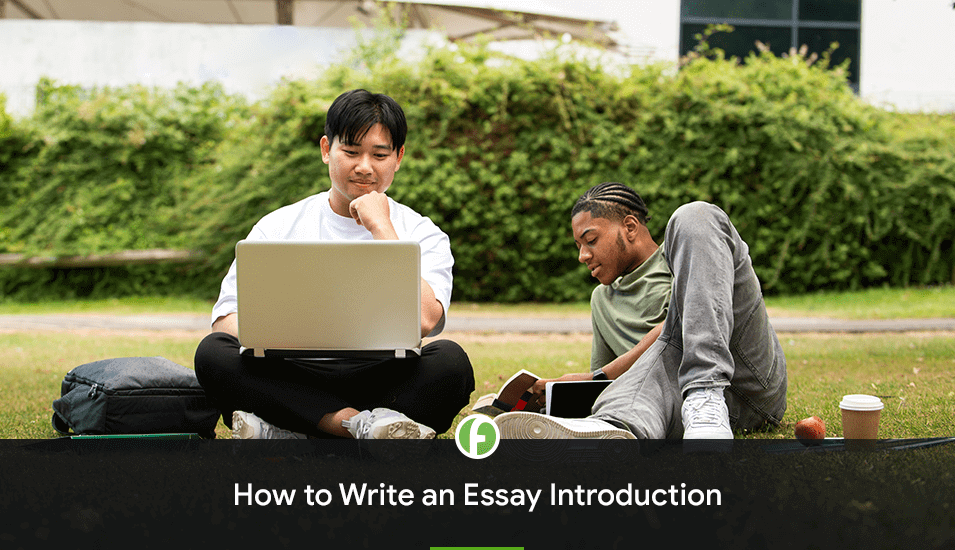Learn Our Narrative Essay Tips and Techniques and Become Successful!

So you have to write a narrative essay but you do not know how to do it well? Are you wondering if it is really as difficult as it sounds? Let us guide you through the process of writing a good narrative paper providing you with the effective rules of narrative writing.
What Is a Narrative Essay?
A narrative essay is a story based on the author`s personal experience. Thus, the primary purpose of such a paper is to tell about a significant event, person, or experience from the author`s life by the means of storytelling. Along with own reflections, you need to support your arguments with evidence in the form of real-life experiences. A successful narrative essay is always engaging, clear, and focused. As such, you need to use the techniques that will help you engage your reader making him/her follow the flow of your ideas. In such an essay, you need to work hard to demonstrate your creativity. Being rather personal in its nature, a narrative essay allows the author using the first person, slang, and informal writing style.
Despite its informal nature, a narrative essay is not just a chain of events that happened with you. First and foremost, you need to tell the story. Second, this story should be closely related to the subject you study in your class. Although this paper requires reflecting on your personal experience, the teacher does not insist on making it too realistic. If you need to invent some details to make your story more colorful or intriguing, you are free to do that. Following your requests, we have developed the list of creative narrative essay tips that will help you create a wonderful essay applying minimum efforts!
Narrative Essay Writing Process: The Essential Narrative Essay Tips
To create breathtaking narrative essay papers, you need to follow the common procedure that includes the following steps:
Preparation Stage
Before you start your writing process, you need to study your requirement carefully to make sure you can manage every point of the professor`s guidelines. To bring you an excellent grade, your essay should follow the professor`s guidelines precisely. For example, if your guideline says you need to provide a 500-word essay, you should not exceed this word count. Also, creating a good narrative essay is impossible without having something special to write about. We highly recommend you to select a good topic for your narrative essay since it is an integral part of your success.
Step 1: Brainstorming Your Ideas
Every great narrative starts with a spark of inspiration. Your first step is to brainstorm ideas. Consider moments from your life that left an impact, whether positive or negative. Think about personal experiences, challenges you’ve overcome, or lessons you’ve learned. These will serve as the foundation for your narrative.
Exercise: Create a mind map or a list of potential story ideas. Reflect on your life’s pivotal moments.
Step 2: Choosing the Perfect Topic
Now that you have a list of potential stories, it’s time to select the one that resonates with you the most and has the potential to captivate your audience. Choose a topic that allows you to convey a clear message or lesson.
How to Choose a Good Topic?
The choice of the topic for your narrative essay can be rather challenging. However, at the same time, it may turn into an adventure that will return you in the happiest days of your childhood. Your potential topic should be interesting both to you and your target audience. Since a narrative essay is usually written about the author`s personal experiences, there is no need to use outside sources. The three main features of a good narrative essay topic are as follows:
- It is neither too narrow nor too broad;
- It is not widely discussed in the essays that can be found on the web;
- It should make the audience start reading your essay.
Here are some popular essay topic examples for your narrative essay type:
- The most embarrassing experience of your life.
- Tell about a frightening experience you’ve had.
- An experience that showed you real-life values.
- An experience that helped fight cowardice.
What Is Required from the Student?
When assigning a narrative essay, the professor does not want you to apply excellent analytical skills as it is required in research paper writing. Instead, the professor wants you to demonstrate your ability to build logical connections between the events, organize your ideas and thoughts in a logical order, and describe the most vibrant points using vivid language. As such, we recommend you pay attention to creating a special mood that will impress your reader.
Where the Evidence Can Be Found?
Whereas writing any other academic paper requires thorough research with outside sources when writing a narrative essay, you need to take evidence from your memories. As such, you should not underestimate the value of the brainstorming process that aims to help you find the right arguments and evidence.
Writing Process: Narrative Writing Steps
Undoubtedly, the process of writing a narrative essay is rather engaging since it involves several stages. At first, you need to create an outline that will include all points that will be discussed in the essay. Your introduction should include background information. The main body of your paper presents the development of your topic and its climax. Finally, your narrative essay should include a strong concluding paragraph that will contain a thought-provoking statement making the right impression on your reader. We assure you that only a phenomenal paper will help you get an excellent grade!
Step 3: Outlining Your Essay
An outline is your roadmap for the narrative. It helps you organize your thoughts and create a logical structure for your essay. Divide your essay into three parts: introduction, body, and conclusion.
- Introduction: Set the stage, introduce the main characters (including yourself), and present the central theme or message.
- Body: This is where your story unfolds. Describe the events, characters, and emotions. Use vivid details to immerse your readers in the experience.
- Conclusion: Wrap up your story by reflecting on its significance. What did you learn? What message do you want to convey?
Step 4: The Hooking Introduction
Your introduction should grab your reader’s attention and set the tone for your narrative. Consider starting with a compelling quote, a rhetorical question, or a gripping anecdote related to your topic.
Read also: How to Write a Hook for an Essay
Step 5: Crafting the Body
The body of your narrative is where you bring your story to life. Use descriptive language, sensory details, and dialogue to make your narrative vivid and engaging. Show, don’t tell. Allow your readers to experience the story alongside you.
Exercise: Highlight key scenes or moments you want to include in your narrative. Describe them in detail to create a visual and emotional impact.
Step 6: Concluding with Purpose
In the conclusion, reiterate the central message or lesson you want your readers to take away from your narrative. Reflect on how the events of the story have shaped you or others involved. End with a thought-provoking statement or a call to action.
Providing Personal Information in First Person
You probably realize that a narrative essay is so important since it emphasizes the significance of the specific person or event in the development of your identity. Therefore, it is recommendable to use the first person in such a paper. Including an unpredictable twist in your story to amuse and surprise your reader is an efficient tip to write an essay.
Provide a Detailed Description of Characters and Places
Although you do not have to write a descriptive essay, your story should have vivid details that will help your readers imagine that they are a part of your narration. If you are telling about a particularly significant event, you need to be as honest and comprehensive as possible.
Add Some Spice!
You are writing a personal paper, so use this privilege by inserting something special. For instance, if you are writing about a memorable day in your life, mention the antagonist, who could ruin your plans but failed to do that. Include an appropriate joke whenever it is possible to make your reader smile.
Step 7: Revision and Editing
Once you’ve written your first draft, it’s time to revise and edit. Look for clarity, coherence, and grammar errors. Ensure your narrative flows smoothly from beginning to end. Pay attention to feedback from peers or instructors.
Although some students underestimate the value of editing, we assure you that this process is an important part of your grading rubric. When editing your paper, make sure you didn`t miss the crucial details and all your ideas are organized in the right order.
Keep in mind that to make your essay smooth and easy to follow, you need to include the transition words.
Good Tips for Editing Your Essay
- Do not start editing your paper right after the writing process. Take some pause and have a rest. Looking into your paper with fresh eyes significantly increases your chances to polish it;
- Transform the long and complicated sentences into the simpler ones;
- Avoid using unknown words. If it is impossible, make sure to explain their meaning;
- Delete all repetitions;
- If the sentence sounds awkward, make sure to paraphrase it;
- Check the overall structure of your essay and fix all logical fallacies.
Exercise: Read your essay aloud or have someone else read it to you. This can help identify areas that need improvement.
Narrative Writing Tips: Proofreading
Proofreading is the final stage of the writing process. Many students mistakenly confuse editing and proofreading but we want you to know that these processes are rather different in their essence. As such, editing deals with the paragraph structure, style, and content, whereas proofreading aims to fix the grammar, spelling, and punctuation errors if there are any.
What Should Be Considered When Proofreading your Narrative Essay?
- Use the online grammar checkers but do not rely on them fully. A thorough manual check is a perfect tool for fixing all mistakes;
- Replace the misspelled words with the correct ones;
- Make sure every comma is appropriate.
It would be great to hire someone, who could look into your narrative essay with fresh eyes and point out the mistakes you have committed. After all, it always better to find out the objective opinion about your essay before its submission.
By following these seven steps, you’ll be well on your way to crafting a captivating narrative essay that not only tells a story but also leaves a lasting impression. Remember, writing is a journey, and each step you take brings you closer to creating a narrative that resonates with your readers and showcases your storytelling prowess.
Samples of Narrative Essays
By us, also, you can be able to access different examples of narrative essays provided.
So, take a closer look at the narrative essay tips suggested by our writers. We assure you that following these guidelines, you will be able to create an outstanding narrative essay!


